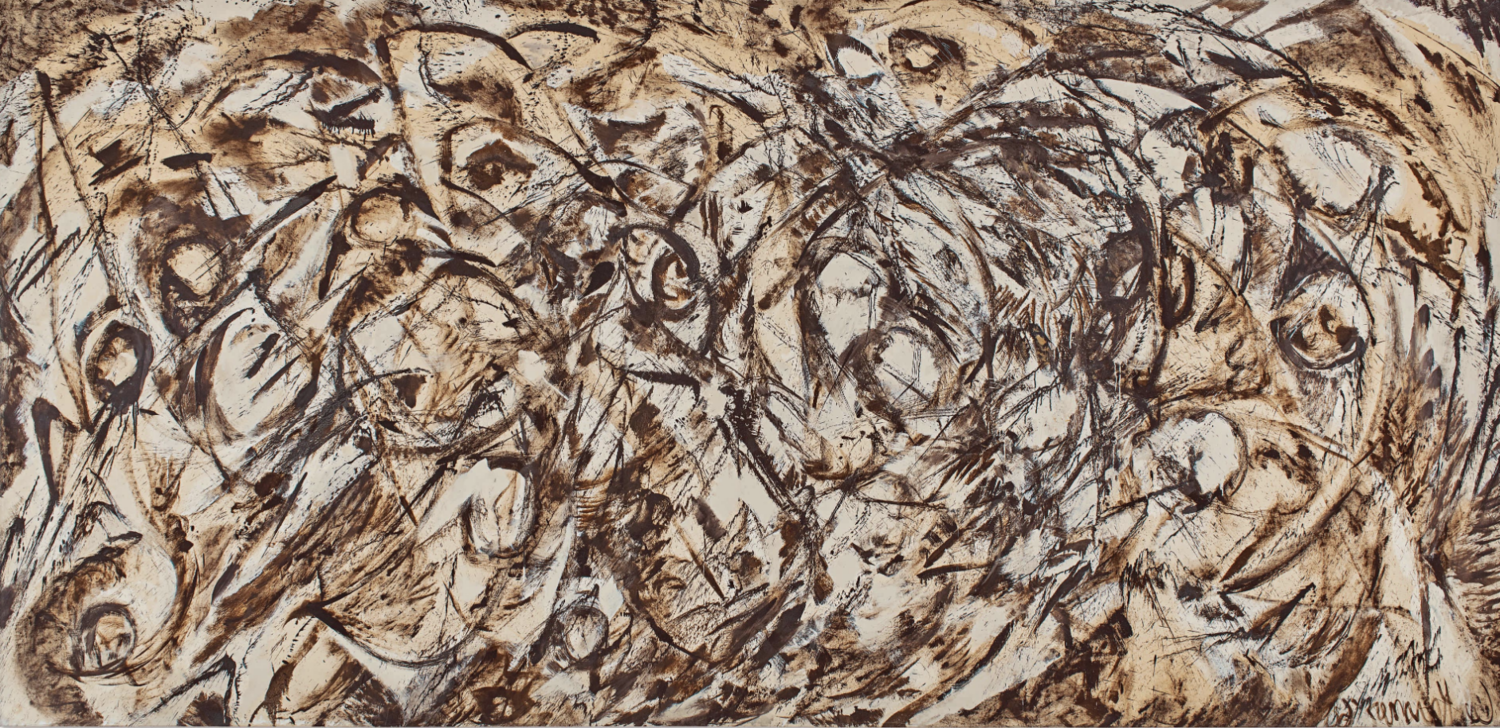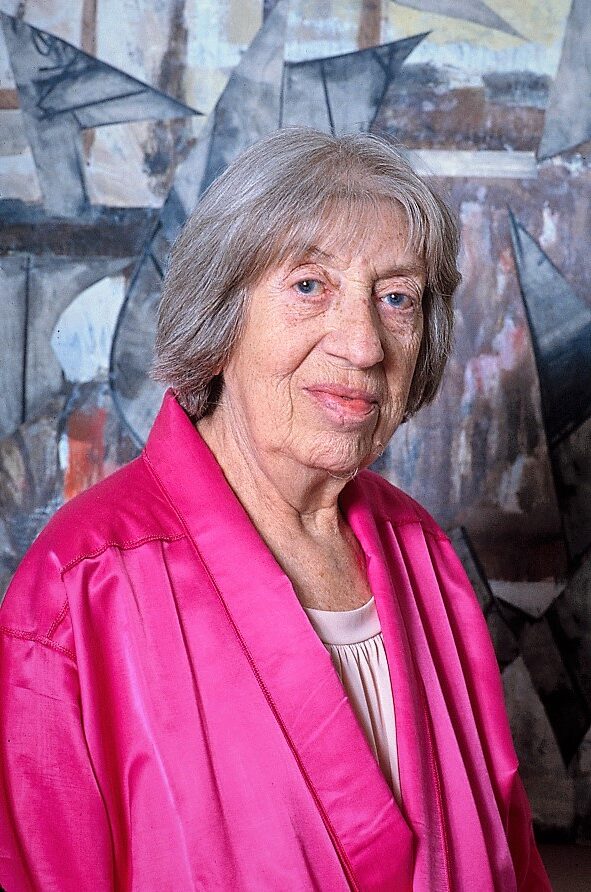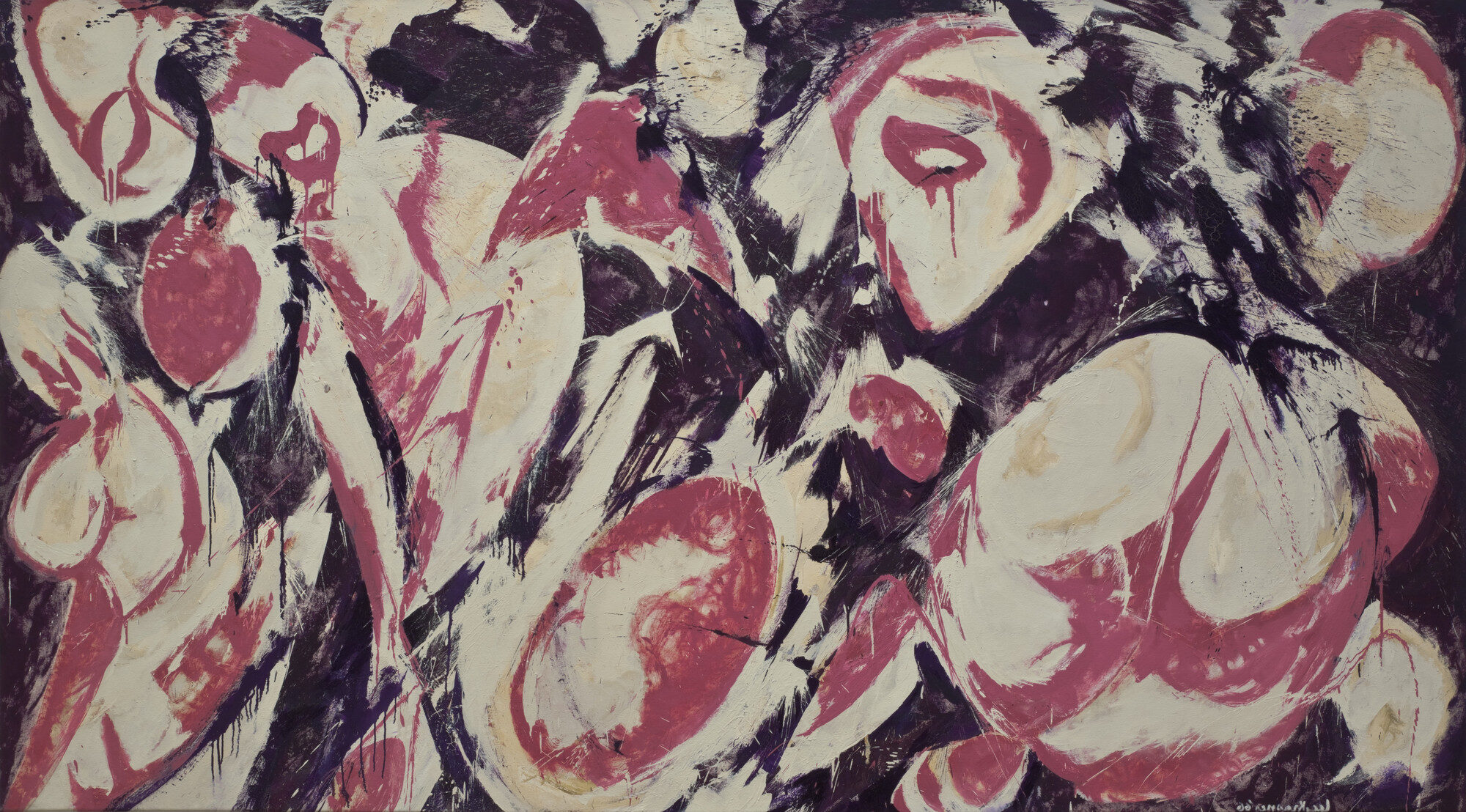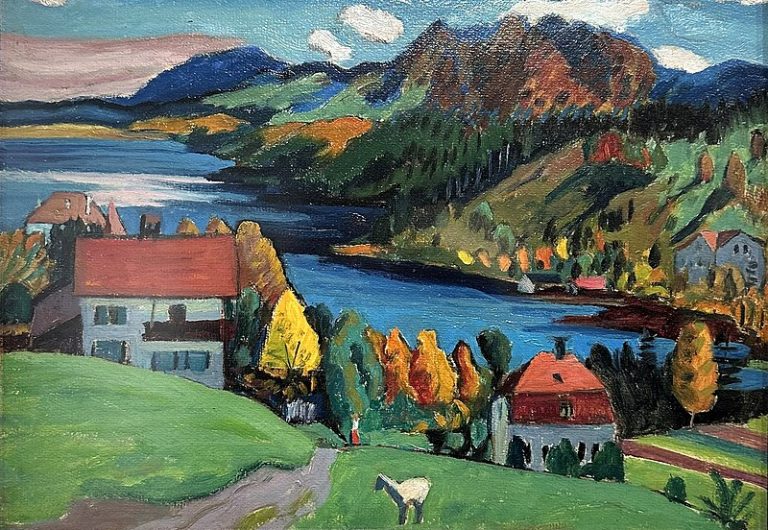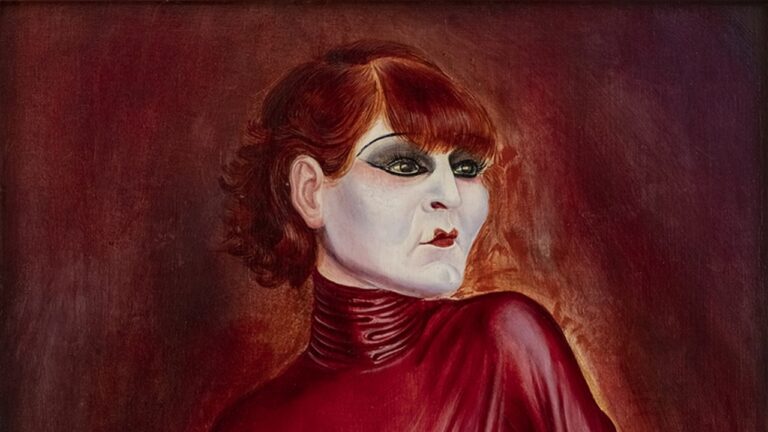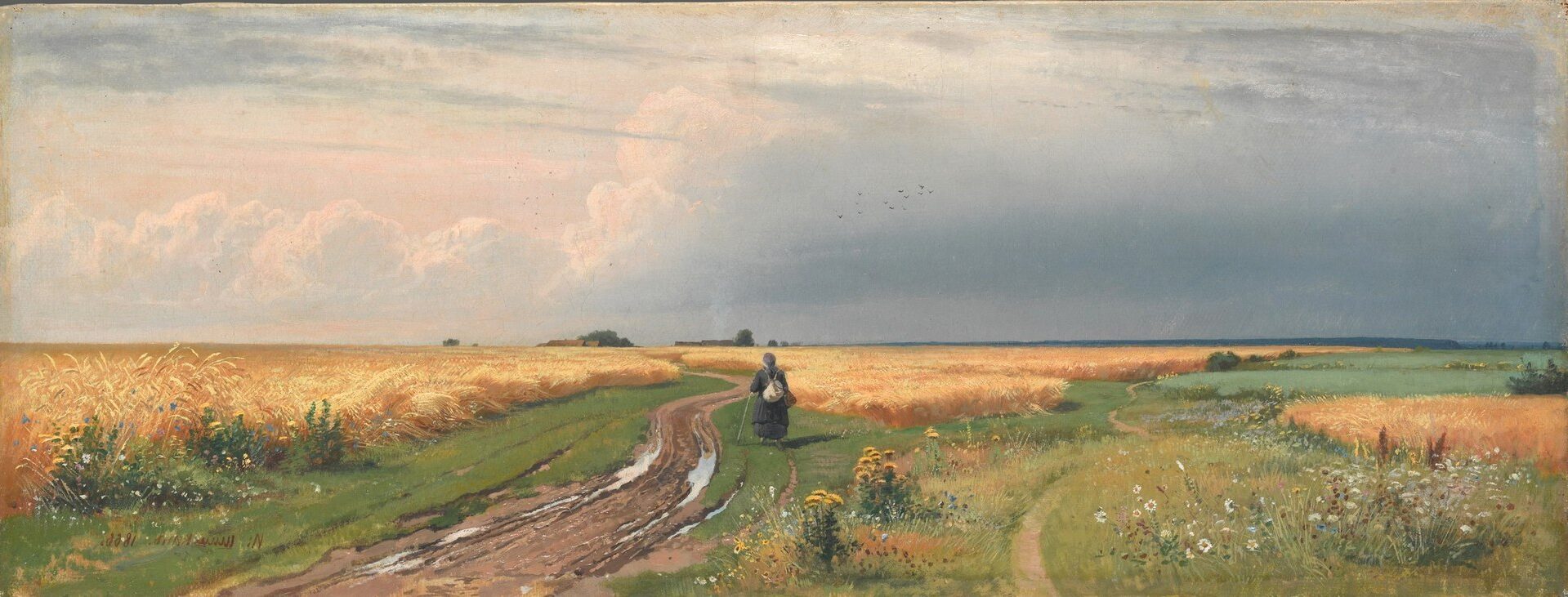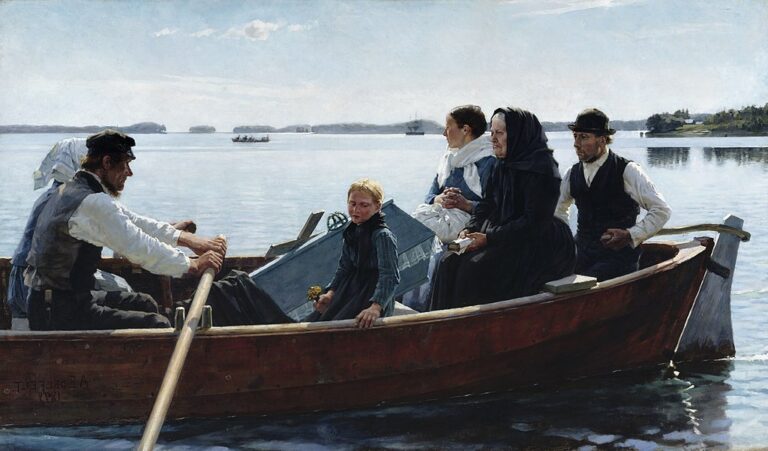Lee Krasner, Painter: Pioneering Abstract Expressionist and Artistic Innovator
Born: October 27, 1908, New York City, U.S.
Death: June 19, 1984, New York City, U.S.
Mouvement artistique : Expressionnisme abstrait
Nationalité : Américain
Teacher: Hans Hofmann
Institution: National Academy of Design, Women’s Art School of Cooper Union
Lee Krasner, Painter: Pioneering Abstract Expressionist and Artistic Innovator
Life and Career of Lee Krasner
Lee Krasner navigated a complex artistic journey throughout her life. She established herself as a significant figure in Abstract Expressionism. Her career spanned several decades of artistic evolution, personal challenges, and eventual recognition for her distinctive contributions to modern art.
Petite enfance et éducation
Born Lena Krassner on October 27, 1908, in Brooklyn, New York, Krasner showed artistic talent from an early age. She pursued formal art education at several prestigious institutions, including the Women’s Art School of Cooper Union and the National Academy of Design.
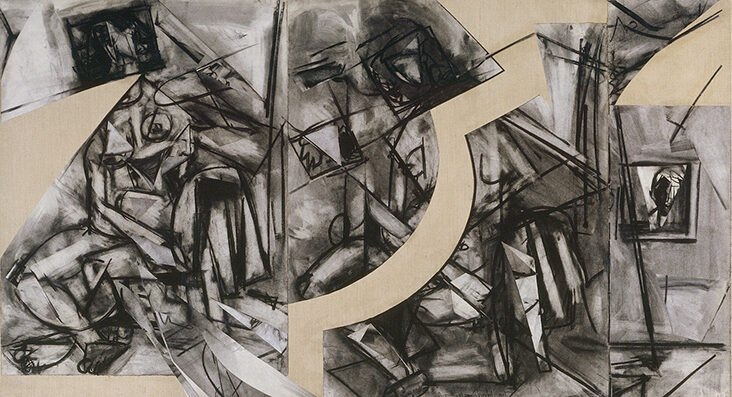
Past Conditional, 1976, by Lee Krasner
In the 1930s, Krasner studied under influential artist Hans Hofmann. He praised her work as being so good that one would “not know it was done by a woman.” This backhanded compliment reflected the gender bias Krasner would face throughout her career.
Her early style showed influences of cubism and neo-cubism as she developed her artistic voice. Despite gender barriers in the art world, Krasner remained determined to establish herself as a serious artist.
Marriage to Jackson Pollock
Krasner met fellow artist Jackson Pollock in 1941 at an exhibition, and they married in 1945. Their relationship was both personally and professionally significant, with each influencing the other’s artistic development.
The couple moved to Springs in East Hampton, New York, where they both maintained studios. While Pollock’s career flourished with his innovative drip paintings, Krasner often put her own work aside to support and promote his career.
Their marriage was complicated by Pollock’s alcoholism and volatile behavior. The relationship ended tragically when Pollock died in a car crash in 1956 while driving under the influence. This devastating event marked a turning point in Krasner’s life and work.
Work with the Federal Art Project
During the Great Depression, Krasner joined the Federal Art Project (FAP), a program under the Works Progress Administration. This government initiative provided crucial financial support for artists during economic hardship.

The Seasons, 1957, by Lee Krasner
Through the FAP, Krasner created murals for public buildings and taught art classes. The program allowed her to develop professionally while earning a living during difficult economic times.
Her involvement connected her with other artists who would later form the Abstract Expressionist movement. The collaborative environment of the FAP fostered important artistic relationships and exposed Krasner to diverse artistic approaches.
This period helped Krasner refine her technical skills and expand her artistic network before she fully embraced abstract expressionism.
Solo Artistic Development
Following Pollock’s death, Krasner experienced a period of intense creativity and artistic growth. She moved into Pollock’s larger studio and began creating more ambitious works, no longer in the shadow of her famous husband.
Her style evolved through several distinct phases. The “Earth Green” series featured organic, nature-inspired forms, while her later “Night Journeys” works, created during a period of insomnia, used darker palettes and more dramatic compositions.
Krasner was known for her critical approach to her own work. She would often cut up canvases she was dissatisfied with and create collages from the fragments, demonstrating her willingness to destroy and recreate.
Her work showed remarkable versatility as she continually reinvented her artistic approach, refusing to settle into a signature style like many of her contemporaries.
Les dernières années et l'héritage
By the 1970s, Krasner finally began receiving significant recognition for her artistic contributions. Her first major retrospective was held at the Whitney Museum of American Art in 1973, celebrating her unique vision and technical mastery.

The Sun Woman II, 1958, by Lee Krasner
Despite health challenges including arthritis, Krasner continued creating art until her death in 1984. Her later works maintained the vitality and innovation that characterized her entire career.
After decades of being primarily known as “Pollock’s widow,” Krasner’s reputation as an important artist in her own right has grown substantially. Today, her paintings command high prices at auction, and she is recognized as a pioneering figure in abstract expressionism.
Krasner’s legacy extends beyond her artwork to her role in preserving Pollock’s legacy while establishing her own independent artistic identity.
Style et influence artistiques
Lee Krasner developed a distinctive artistic approach characterized by energetic compositions, bold colors, and psychological depth. Her work evolved throughout her career as she experimented with different techniques, especially in abstraction and collage.
Développement de l'expressionnisme abstrait
Krasner became a pivotal figure in the Abstract Expressionist movement during the 1940s and 1950s. Her early training with Hans Hofmann introduced her to concepts of spatial tension and abstract form that would influence her mature style.
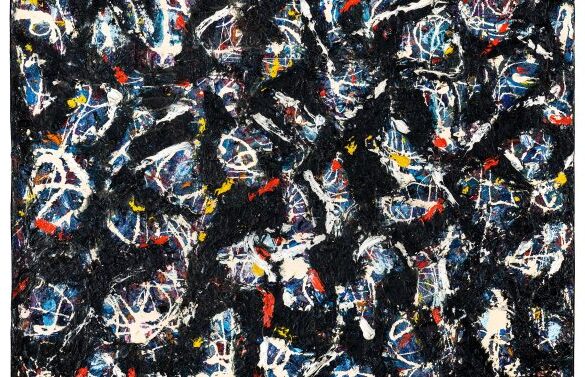
Abstract No. 2 by Lee Krasner
Unlike some of her contemporaries, Krasner’s abstraction maintained a sense of order and structure. Her paintings often featured rhythmic patterns and dynamic movement, creating what art historians describe as “pulsating images” that combined abstract form with deeper psychological content.
During the years she worked alongside her husband Jackson Pollock, Krasner developed her own distinctive voice within Abstract Expressionism. While Pollock became known for his drip paintings, Krasner explored controlled gesture and intentional composition.
Her “Little Image” series from the late 1940s showcased her interest in calligraphic forms and symbolic language. These densely packed canvases revealed her unique contribution to the language of abstraction.
Collage Technique and Innovation
In the 1950s, Krasner pioneered innovative collage techniques that would become a signature element of her artistic practice. Following Pollock’s death in 1956, she began cutting up her earlier paintings and drawings, reassembling them into dynamic new compositions.
These collages demonstrated Krasner’s willingness to destroy her own work in service of creating something new. She layered torn paper and canvas fragments, creating complex, textured surfaces that challenged traditional notions of painting.
Her collage works like “Milkweed” (1955) and “Bald Eagle” (1955) showcased her masterful use of color, shape, and composition. Krasner applied thick paint and incorporated diverse materials, developing a three-dimensional quality in many works.
This technique allowed her to recycle and transform her artistic past while creating forward-looking works that influenced later generations of artists working with mixed media.
Influence sur l'art moderne
Krasner’s influence extends beyond her own artistic output to her role in shaping modern art discourse. As one of few female artists fully accepted in the male-dominated Abstract Expressionist circle, she helped broaden the movement’s perspectives.
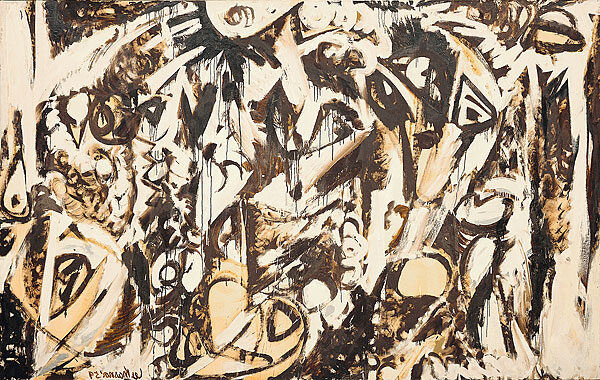
Cool White, 1959, by Lee Krasner
Her commitment to constant reinvention inspired many artists who similarly refused to be confined by a single style. Krasner’s work bridged European modernism and American abstraction, creating a visual language that resonated internationally.
Young female artists particularly found inspiration in Krasner’s persistence and evolution throughout her long career. Her willingness to experiment and change directions demonstrated remarkable artistic courage.
The Pollock-Krasner House and Study Center preserves not only the couple’s living and working spaces but also promotes scholarship on their artistic contributions. Through this institution, Krasner’s influence continues to reach new generations of artists and scholars.
Recognition and Representation in Museums
For many years, Krasner’s work was overshadowed by her husband’s fame. However, recent decades have seen a significant reassessment of her contributions to American art.
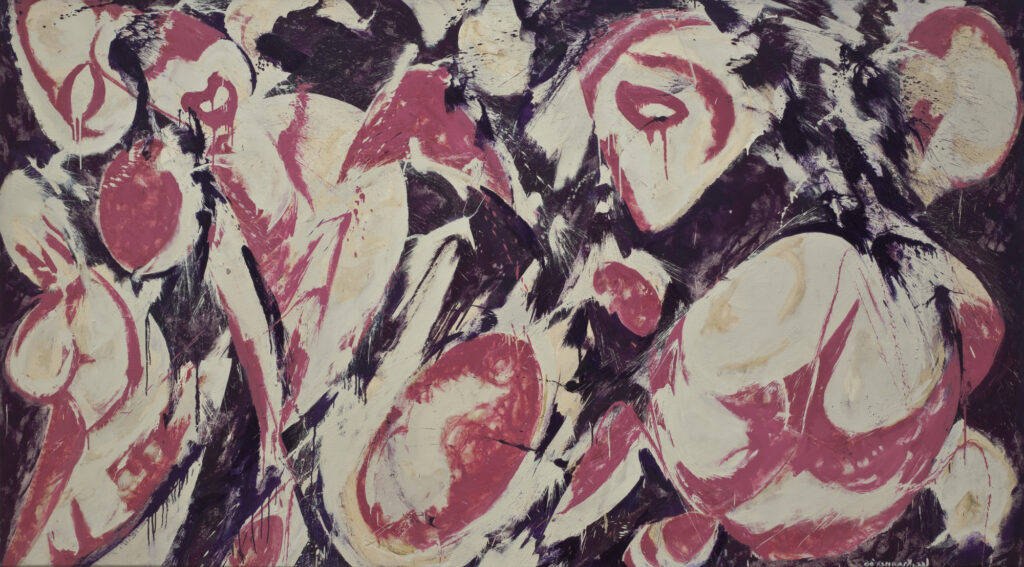
Gaea, 1966, by Lee Krasner
Major institutions including the Whitney Museum of American Art, the Museum of Modern Art, and the Metropolitan Museum of Art now prominently display her work. A retrospective at the Cleveland Museum of Art in 2019-2020 highlighted her artistic evolution across six decades.
The Whitney Museum describes Krasner as an artist “whose work has been associated with the Abstract Expressionist movement” but whose unique vision transcended simple categorization. Her paintings command increasing attention from collectors and museums worldwide.
Art historians now recognize Krasner’s huge contribution to abstract expressionism that was previously underacknowledged. This reevaluation places her among the most significant American artists of the 20th century, independent of her relationship with Pollock.
Questions fréquemment posées
Lee Krasner’s artistic journey raises many important questions about her techniques, influences, and legacy in the art world. Her pioneering work as an abstract expressionist and her contributions to the advancement of women artists remain significant topics of interest.
What was Lee Krasner’s influence on abstract expressionism?
Lee Krasner was a pivotal force in the development of abstract expressionism. She pushed abstraction forward throughout her career, constantly reinventing her approach and techniques.
As one of the few female artists in the predominantly male abstract expressionist movement, Krasner brought unique perspectives and methods to the field. Her work featured bold gestures, rhythmic patterns, and dynamic compositions that evolved significantly over her five-decade career.
Krasner’s influence extended beyond her own artwork through her connections with other artists and critics in New York’s vibrant art scene. Her commitment to abstraction helped cement the movement’s importance in American art history.
How did Lee Krasner’s relationship with Jackson Pollock impact her work?
Krasner’s marriage to Jackson Pollock created a complex dynamic in her artistic development. While the relationship gave her proximity to influential figures in the art world, it also often overshadowed her own accomplishments.
After Pollock’s death in 1956, Krasner experienced a creative resurgence. She produced some of her most powerful and large-scale works during this period, demonstrating her resilience and artistic independence.
Krasner’s work was distinct from Pollock’s, showing her own artistic vision and techniques. She maintained her artistic identity while engaging with abstract expressionist principles in her unique way.
What are some of the notable exhibitions that featured Lee Krasner’s artwork?
Krasner’s work has been featured in numerous significant exhibitions. The Museum of Modern Art (MoMA) has displayed her pieces as part of their celebration of abstract expressionist pioneers.
In recent decades, major retrospectives have honored Krasner’s contributions to modern art. These exhibitions have helped reposition her as a central figure in abstract expressionism rather than simply as Pollock’s wife.
The National Museum of Women in the Arts has also showcased Krasner’s work, highlighting her importance in advancing women’s place in the art world. Her paintings continue to be featured in exhibitions focused on mid-century abstraction and women artists.
How has Lee Krasner’s legacy in the art world been recognized posthumously?
Since her death, Krasner’s reputation has grown substantially. Art historians have reassessed her contributions, recognizing her as a significant artist in her own right.
The Pollock-Krasner Foundation, established through her will, continues to support artists through grants. This foundation has become an important part of her legacy, though it does not authenticate or attribute works by either Krasner or Pollock.
Museums have increasingly acquired and displayed her work, cementing her position in art history. Her pioneering role as a woman in abstract expressionism has made her an important figure for feminist art historians.
What techniques and materials did Lee Krasner commonly employ in her paintings?
Krasner frequently worked with oil paints on large canvases, creating dynamic compositions with energetic brushwork. Her technique evolved considerably throughout her career, showing her constant exploration and growth.
She often employed collage methods, cutting up her own earlier works to create new compositions. This recycling process became a signature aspect of her approach, demonstrating her willingness to transform and reinvent.
Krasner’s work featured rhythmic patterns and bold color choices that evolved from her training in cubism and her engagement with abstract expressionist principles. Her painting style varied from densely packed, all-over compositions to more open works with dramatic gestures.
How did Lee Krasner contribute to the advancement of women in the art community?
Krasner broke barriers as one of the few women recognized within the male-dominated abstract expressionist movement. Her persistence and dedication created pathways for future generations of women artists.
Born to a Russian Orthodox Jewish family, Krasner pursued formal art training at several New York institutions. At that time, women faced significant obstacles in the art world. Her determination to be taken seriously as an artist challenged prevailing attitudes.
Through her example and success, Krasner demonstrated that women could create powerful, innovative abstract art. Her legacy has inspired numerous women artists and contributed to changing perceptions about women’s roles in the visual arts.

